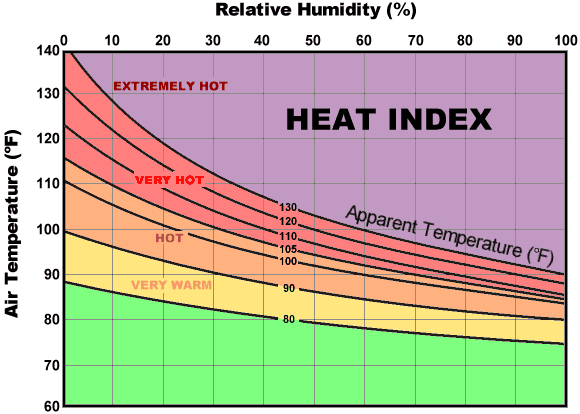
An atmospheric river will bring heavy rainfall to lower elevations of California this week, and heavy snow to the Sierra Nevada mountains. Flash flooding, some of which may be locally considerable, will be a concern on the western foothills of the Sierra Nevada mountains through Tuesday. Landslides, rockfalls and mudslides are possible in the Southern California mountains. Read More >
The Heat IndexWe use this table to provide you with Heat Index values. These values are for shady locations only. Exposure to full sunshine can increase heat index values by up to 15°F. Also, strong winds, particularly with very hot, dry air, can be extremely hazardous as the wind adds heat to the body. The Heat Index Chart is below.  How to read the chart...Follow the temperature line until it intersects the relative humidity line. Then read the Heat Index on the curved line. For example, an air temperature of 100°F and Relative Humidity of 40%. Follow the 100°F temperature line until it intersects the 40% relative humidity line. Then curved line that also intersects is the Heat Index of 110°F, or Very Hot. That is the temperature the body thinks it is and attempts to compensate for that level of heat. Remember, these values are in the SHADE. You can add up to 15°F to these values if you are in direct sunlight. The chart below tells you the risk to the body from continued exposure to the excessive heat.
|
||||||||||||||||||||
  |